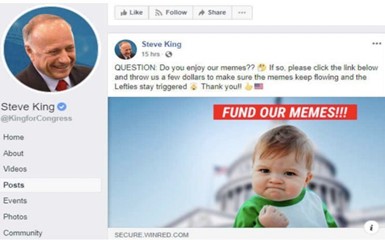In a long-standing copyright dispute on its second visit to the US Court of Appeals for the Federal Circuit, the Court affirmed the modest damages award from the US Court of Federal Claims, ruling that a hypothetical negotiation between the parties would have resulted in a license in the amount awarded by the claims court. Bitmanagement Software GmBH v. United States, Case No. 23-1506 (Fed. Cir. Jan. 7, 2025) (Dyk, Stoll, Stark, JJ.)
In 2016 Bitmanagement sued the US Navy for copyright infringement of its software. The Court of Federal Claims awarded damages based on usage of the software, rather than the number of copies made. In the first appeal, the Federal Circuit agreed with the claims court that the Navy had an implied license to make copies of the software but was limited as to simultaneous users of the software, a condition that the Navy breached. The Federal Circuit remanded the case with the following instruction:
Because Bitmanagement’s action is against the government, it is entitled only to “reasonable and entire compensation as damages . . . , including the minimum statutory damages as set forth in section 504(c) of title 17, United States Code.” 28 U.S.C. § 1498(b).
The Federal Circuit further instructed the claims court that Bitmanagement was:
. . . not entitled to recover the cost of a seat license for each installation. If Bitmanagement chooses not to pursue statutory damages, the proper measure of damages shall be determined by the Navy’s actual usage of BS Contact Geo in excess of the limited usage contemplated by the parties’ implied license. That analysis should take the form of a hypothetical negotiation. . . . As the party who breached the . . . requirement in the implied license, the Navy bears the burden of proving its actual usage of the . . . software and the extent to which any of it fell within the bounds of any existing license.
Following this mandate, the claims court denied Bitmanagement’s damages demand of almost $86 million and awarded $154,000. Bitmanagement appealed, arguing that it was entitled to damages based on each copy of the software made, rather than damages based on use exceeding the implied license.
The Federal Circuit disagreed, explaining that the law does not require that every award of copyright damages be on a per-copy basis:
. . . whenever the copyright in any work protected under the copyright laws of the United States shall be infringed by the United States . . . the exclusive action which may be brought for such infringement shall be an action by the copyright owner against the United States in the Court of Federal Claims for the recovery of his reasonable and entire compensation as damages for such infringement . . .
As the Federal Circuit noted, the methods used to determine recovery of “actual damages” under § 504 are those “appropriate for measuring the copyright owner’s loss.” Therefore, in § 504(b) cases, the copyright owner must prove “the actual [...]
Continue Reading
read more

 Subscribe
Subscribe




